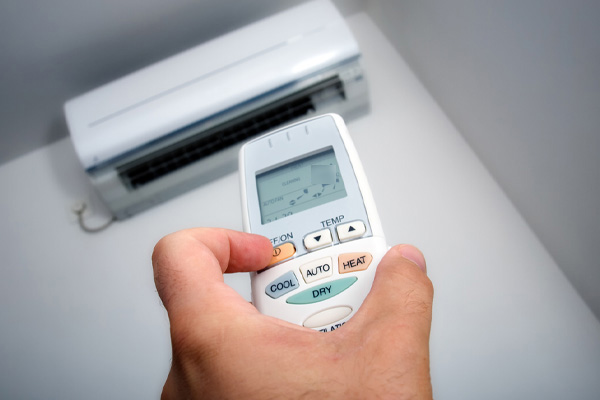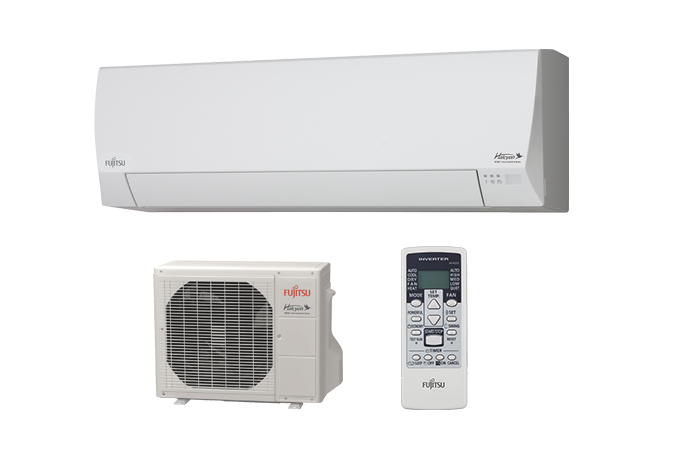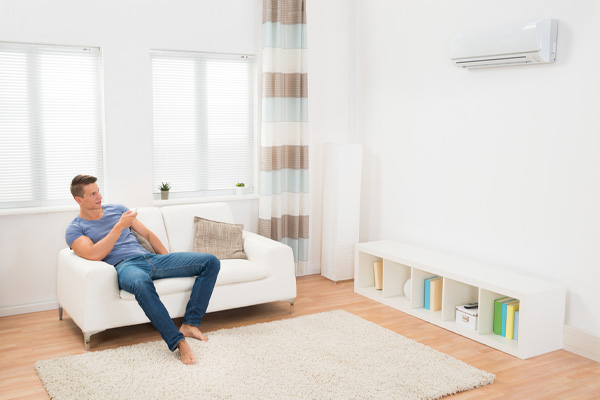
Ductless air conditioners do not have ductwork, unlike central air conditioners. However, these cooling systems work similarly to central air conditioners. Ductless air conditioners cool an area by pulling in warm air to absorb the heat and moisture which are then unloaded outside. Ductless cooling units deliver the cold air directly to the targeted room because they don’t have ducts. On the other hand, central air conditioners channel the cold air through a ductwork system that distributes it throughout your home. In this article, we answer the question, “How do ductless air conditioners work?”.
How Do Ductless Air Conditioners Work?
Read on to learn everything you need to know about this topic.
Components Of A Ductless AC Unit
 Three primary components that make up a ductless cooling system are:
Three primary components that make up a ductless cooling system are:
- Evaporator/blower unit: An evaporator/blower unit is located inside the room that the air conditioner serves. These parts are usually thin and three feet long. It is the component that sucks in the warm air in the room, absorbing the heat and moisture and then channeling the cold air back into the room. These components direct the cold air back to the room and, at the same time, send the heat and moisture outside via the conduit.
- Conduit: This component links the air conditioner’s indoor component with the external component. It is a long, thin cable consisting of the condensation drain, refrigerant tubing, and power cable. The conduit provides electricity to the ductless air conditioner’s indoor and outdoor parts. It is also where the moisture and heat from inside your home pass through as they make their way outside via the condenser.
- Condenser: The condenser is placed outside of your home. It works by taking all the heat from your home and dumping it outside.
Single-Zone Mini-Split Versus Multi-Zone Ductless Setups

Ductless cooling systems work not only in single rooms but also in multi-room applications. Ductless air conditioning systems can be installed in different settings based on these two platforms:
- Single-Zone Mini-Split: A mini-split has one outdoor condenser and an evaporator/blower unit. This is an ideal system for cooling a single room. If there is sufficient outdoor space for several condensers, you can have numerous ductless air conditioners working together to cool a building. This allows you to customize the temperature in every zone. It also means that the rest won’t be affected even if one system is faulty.
- Multi-Zone Ductless HVAC: Multi-split ductless air conditioners come in two variants. One has multiple indoor evaporator/blower units connected to a single outdoor condenser. This setup allows each indoor unit to have its own thermostat. When cooling is required, all units are turned on at the same time. This configuration is more cost-effective. It works best for buildings where rooms have different cooling requirements.
Choose a multi-zone mini-split system with detached compressor circuits connected with every evaporator/blower unit if you want a customizable system that lets you achieve true zoning. This setup allows the occupants in each zone to customize the temperature settings per their preferences and needs.
Do Ductless Air Conditioners Have Adequate Cooling Power?

Individual indoor units might look small, but they can cool a single room/zone, so cooling becomes easier. The unit needs to have a compatible BTU capacity with the room’s size to ensure that it works effectively. As a general rule, bigger rooms require higher BTU ratings. Ask an HVAC contractor to help you determine the cooling load you need. They will utilize several factors to figure out which one will work best for you.
A system that is too small for the room will overstrain to cool the space, causing hastened wear and tear and frequent repairs. At the same time, installing a system that’s too large will lead to short cycling. This is when the system will turn on and off in short, constant bursts, leading to shortened service life. Below are the standard sizes:
- A unit that provides 12,000 BTUs per hour is sufficient for rooms measuring between 400 and 650 square feet.
- Rooms that range from 600 to 1000 square feet need a unit that provides 18,000 BTUs per hour.
- A unit that provides 24,000 BTUs per hour is required for larger rooms measuring between 800 and 13,000 square feet.
Contact your local, licensed HVAC contractor for any query you have about ductless air conditioning systems.
Advantages & Disadvantages Of Ductless Air Conditioners

We discuss a few of the pros and cons that ductless cooling systems have to offer below:
Pros Of Ductless Air Conditioners
- Ductless air conditioners are equipped with in-built zoning. This means that the occupants in each room can customize the temperature settings per their needs.
- Ductless air conditioners are known to be highly energy efficient. According to Energy.gov, leaks in the ducts can waste up to 30% of conditioned air. Having a ductless air conditioner means you don’t have to worry about leakages in the ductwork.
- If there is no pre-installed duct in your home, a ductless cooling system is an ideal and less costly option for you. Many older homes don’t have the required space to install new or additional ducts. Moreover, ductwork installation is a long and expensive process that often entails cutting through ceilings, walls, and floors.
- Ductless air conditioners are highly versatile. Depending on your home’s configuration, they can be installed on the ceiling, floor, or walls.
Cons Of Ductless Air Conditioners
- Ductless ACs usually have a higher upfront cost. However, they are generally more energy-efficient and customizable. Keep in mind that the associated ductwork significantly increases the initial cost of a central air conditioner. As a result, they are more expensive than a ductless system of a similar size.
- Ductless air conditioners are typically placed on the ceiling, walls, or floor. This is unlike central cooling units that can be hidden away in a closet, the attic, or the basement. Ductless air conditioners might be challenging to hide, but they are usually sleeker and less noticeable than window air conditioners.
Conclusion
Ductless air conditioning systems are versatile, energy-efficient, and customizable. Moreover, you don’t need ductwork to distribute the conditioned air, making them generally cheaper to install and maintain than central cooling systems.
Call Point Bay Fuel For All Of Your HVAC Requirements

Point Bay Fuel provides high-quality HVAC services in Ocean and Monmouth County, New Jersey. Rest assured, our company has the best professionally certified technicians on staff who can conduct excellent heating and cooling repairs, maintenance, replacements, and installations. Each of our friendly techs has years of experience, the right tools, and extensive knowledge to service your HVAC system correctly.
Our company offers the most affordable HVAC service rates in the locality. Our tune-up services can increase your energy efficiency and improve your comfort while reducing your energy bills. When you need to replace or repair your HVAC system, we can recommend the best one that fits your needs and budget. We back all of our work with a guarantee. Schedule a service with Point Bay Fuel today. We offer in-home estimates.
Contact us now by calling (732) 349-5059 to speak to one of our home comfort specialists!
The post How Do Ductless Air Conditioners Work? appeared first on Point Bay Fuel.
No comments:
Post a Comment